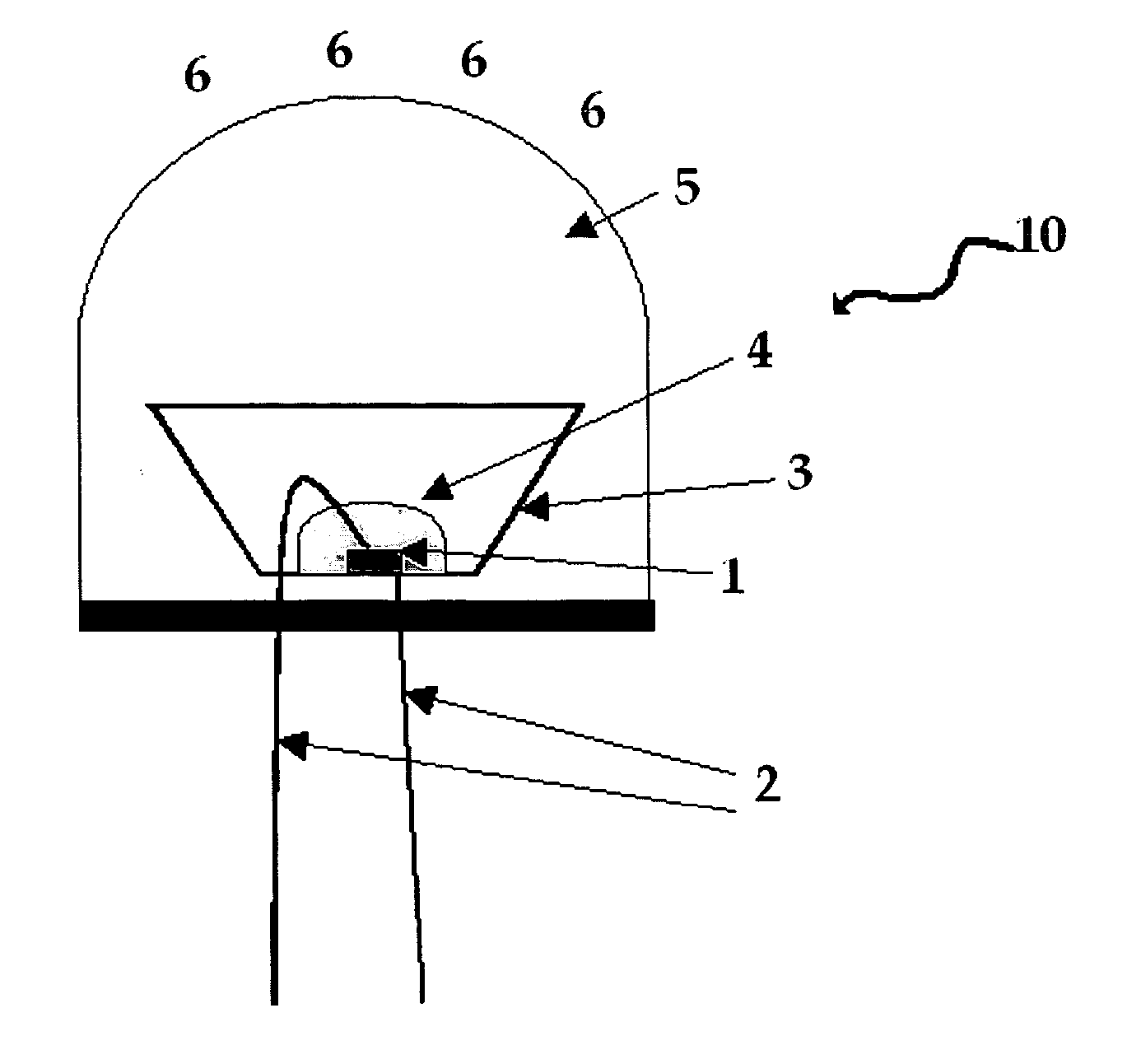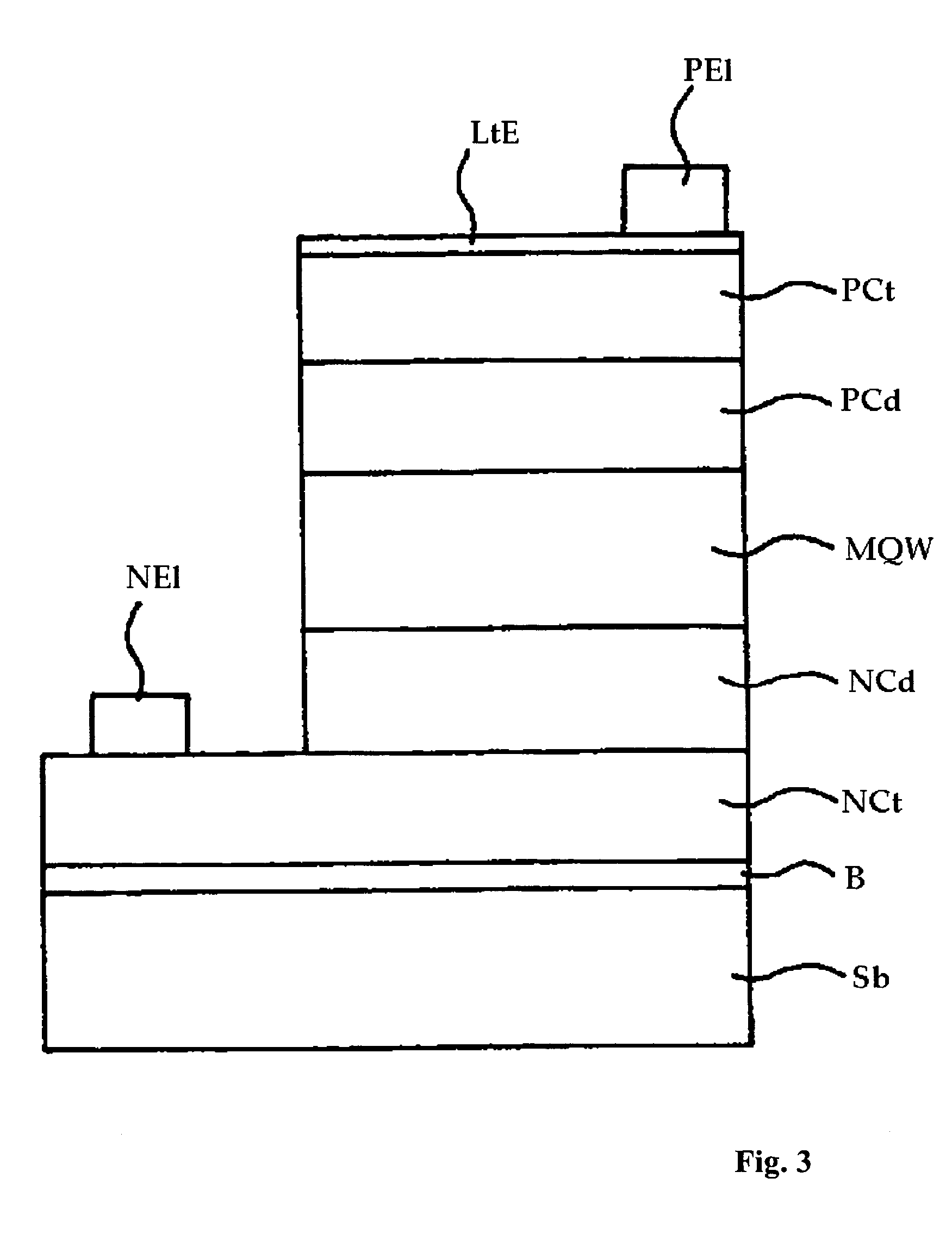Efficient, green-emitting phosphors, and combinations with red-emitting phosphors
a technology of green-emitting phosphor and red-emitting phosphor, which is applied in the direction of discharge tube/lamp details, luminescent compositions, discharge tubes luminescent screens, etc., can solve the problems of low emission efficiency of phosphor and the inability of stg grains smaller than 2 micron or 1 micron (median) to possess acceptable emission efficiency, and achieve the effect of improving efficiency
- Summary
- Abstract
- Description
- Claims
- Application Information
AI Technical Summary
Benefits of technology
Problems solved by technology
Method used
Image
Examples
example 1
Phosphor Formation without Modifier
[0093] The steps for one exemplification of the phosphor-forming process were: [0094] 1. Preparation of Eu3+ / Sr2+ solution: 1.408 gram of Eu2O3 was dissolved in 200 mL dilute nitric acid. 28.34 gram of SrCO3 was slowly added into the solution. Nitric acid was added as necessary. 0.6 mL of 0.01 M Pr6O11solution was added to this system. Deionized water was added to make 300 mL. [0095] 2. Preparation of sulfate solution: 60 gram of (NH4)2SO4 was dissolved in 270 mL deionized water for a 300 mL solution. [0096] 3. Precipitation of SrSO4 fine powders: The sulfate solution prepared in step 2 was added into the solution of step 1 while stirring for ten minutes, resulting in the formation of a SrSO4 fine powder. The pH was adjusted to pH 2.2. [0097] 4. Preparation of Ga solution: 28.72 gram of gallium metal was dissolved in 200 mL concentrated nitric acid. The solution was warmed until the nitric acid fumed (and the preparation turns to brownish). The so...
example 2
Phosphor Formation with Organic Modifier
[0104] The steps for one exemplification of the phosphor-forming process were: [0105] 1. Preparation of Eu3+ / Sr2+ solution: 2.815 gram of Eu2O3 was dissolved in 400 mL dilute nitric acid. 56.69 gram of SrCO3 was slowly added into the solution. Additional nitric acid was added as necessary. 1.2 mL of 0.01 M Pr6O11 solution was added to this system. Deionized water was added to make a 600 mL solution. Then 600 mL ethyl alcohol was added to make 1200 mL. [0106] 2. Preparation of sulfuric acid solution: 50 mL 97% concentrated sulfuric acid was diluted in 300 mL deionized water. [0107] 3. Precipitation of SrSO4 fine powders: The sulfuric acid solution prepared in step 2 was added into the Eu3+ / Sr2+ solution made in step 1 while stirring for ten minutes, resulting in a SrSO4 fine powder. The pH was adjusted to pH 1.3. [0108] 4. Preparation of Ga solution: 57.17 grams of metal gallium was dissolved in 400 mL concentrated nitric acid. The solution wa...
example 3
With Surfactant Modifier
[0114] The steps for one exemplification of the phosphor-forming process were: [0115] 1. Preparation of Eu3+ / Sr2+ solution: 2.815 gram of Eu2O3 was dissolved in 400 mL dilute nitric acid. 56.69 gram of SrCO3 was slowly added into the solution. Additional nitric acid was added as necessary. 1.2 mL of 0.01 M Pr6O11solution was added to this system. Deionized water was added to make 600 mL. 2 wt % sorbitan monolaurate of the SrCO3 weight (1.4 mL) was added. Then, 600 ethyl alcohol was added to make a 1200 mL. [0116] 2. Preparation of sulfate solution: 120 gram of (NH4)2SO4 was dissolved in 540 mL deionized water for a 600 mL solution. [0117] 3. Precipitation of SrSO4 fine powders: The sulfate solution prepared in step 2 was added into the solution of step 1 while stirring for ten minutes, which resulted in the formation of SrSO4 fine powder. The pH was adjusted to pH 1.75. [0118] 4. Preparation of Ga solution: 57.54 gram of gallium metal was dissolved in 400 mL...
PUM
 Login to View More
Login to View More Abstract
Description
Claims
Application Information
 Login to View More
Login to View More - R&D
- Intellectual Property
- Life Sciences
- Materials
- Tech Scout
- Unparalleled Data Quality
- Higher Quality Content
- 60% Fewer Hallucinations
Browse by: Latest US Patents, China's latest patents, Technical Efficacy Thesaurus, Application Domain, Technology Topic, Popular Technical Reports.
© 2025 PatSnap. All rights reserved.Legal|Privacy policy|Modern Slavery Act Transparency Statement|Sitemap|About US| Contact US: help@patsnap.com



